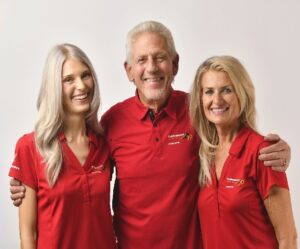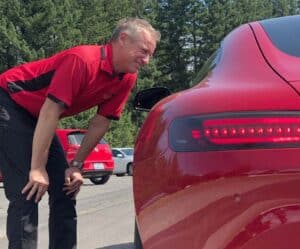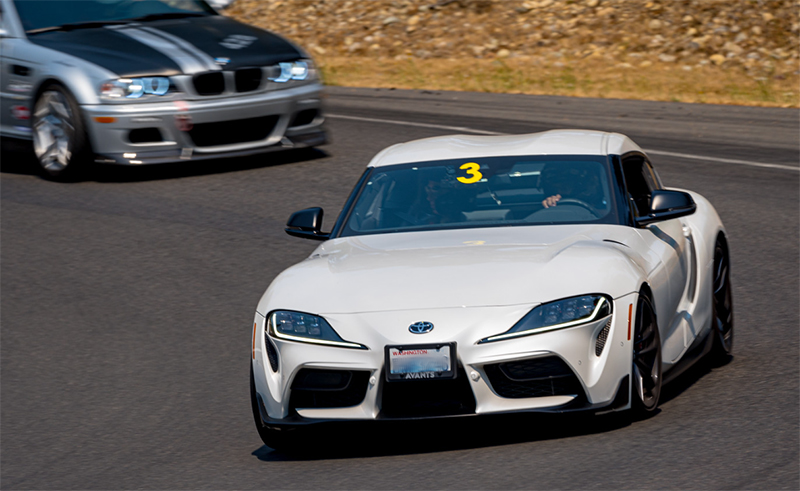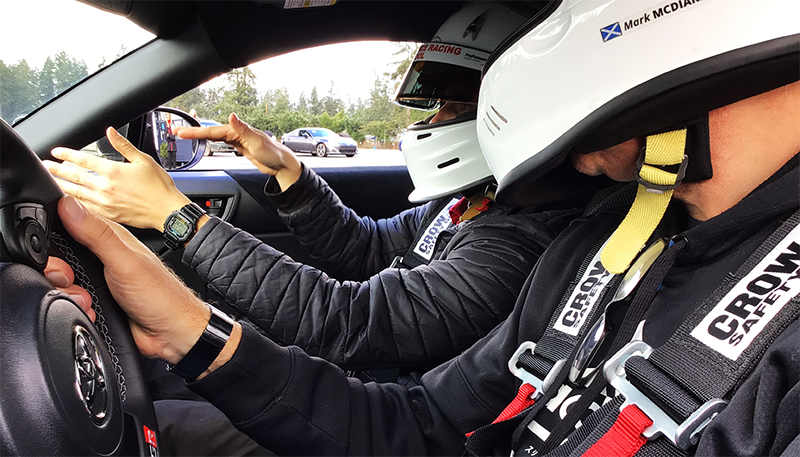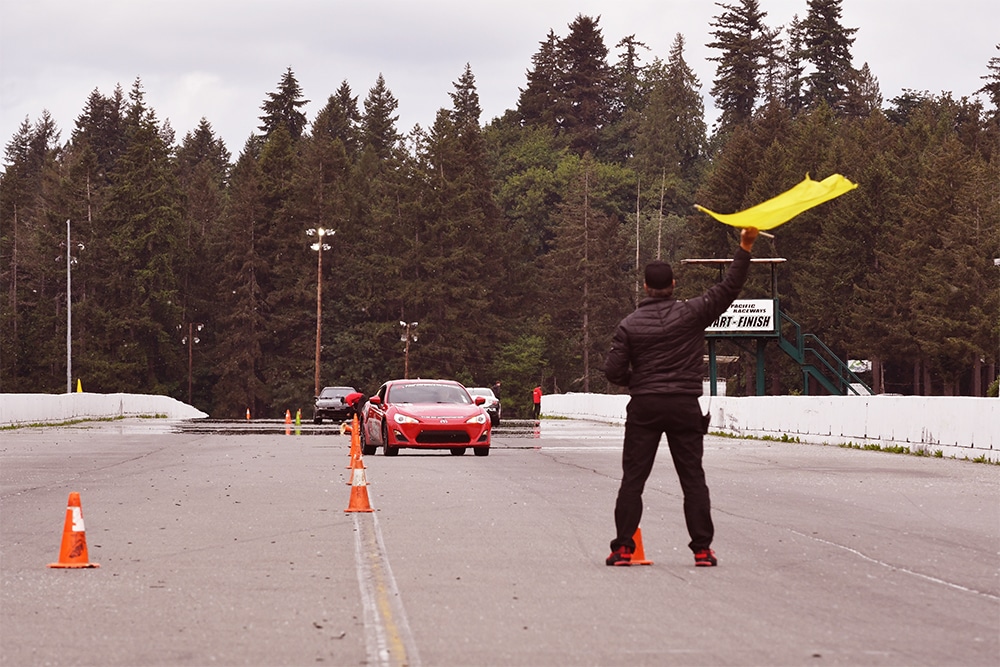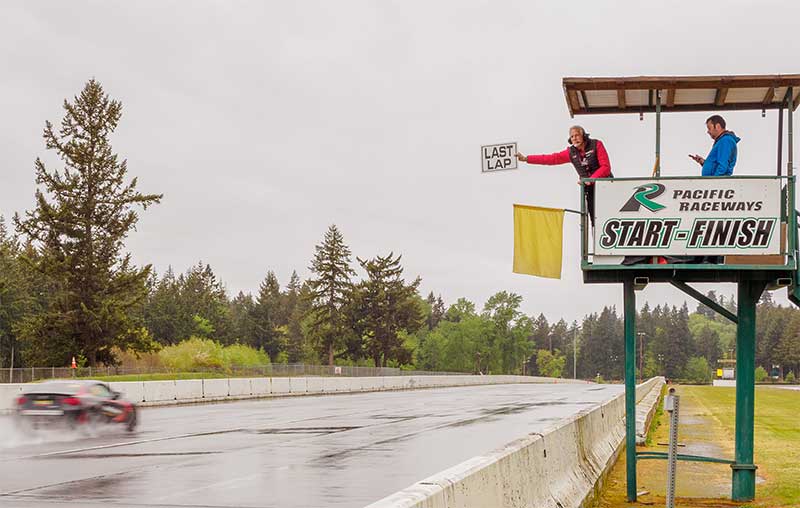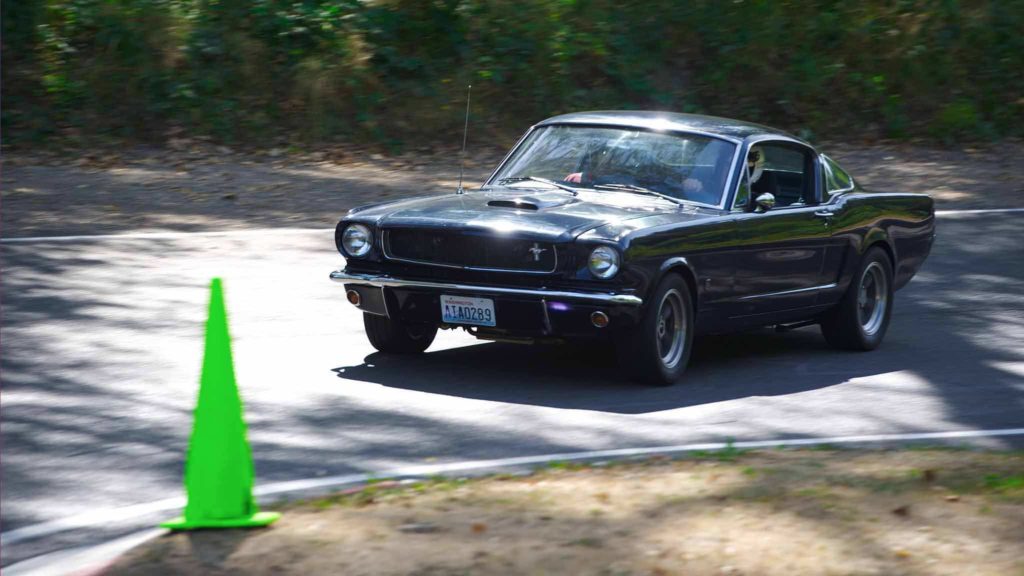Some people call up ProFormance wanting to hit Pacific Raceways without training first. Here’s why that’s a non-starter.
Quite a few people call up ProFormance Racing school with a request, something like this:
“Hi. I just got a new sports car, and I’d like to do some lapping. No need for a driving course — I just want to do some laps and see what my car can do.”
Our answer is always the same: Sorry, we’d love to have you out here, but there’s only one safe and effective way to do it. That’s to start with the One-Day High Performance Driving experience and move on to lapping from there.
The essential baseline
“Sometimes people don’t want to invest the time or money; they just want to get on the course and drive,” says Don Kitch Jr., ProFormance’s Chief Instructor. “But at the end of the day, there’s a baseline of skills they need to navigate their way around a racetrack safely, and we have to help them understand that.”
It’s not as easy as it looks
People like to think they’re good drivers, and on the street, they might well be. But a racetrack is a different animal. “Usually, we tell them that our braking technique on the track is exactly the opposite of how you brake on the street. Most of them say, ‘Oh, I need to learn about that.’ That’s just one of many skills that we have to instill in you. You’ll need to learn the proper way to slow down, how to ask the car to change directions, and accelerate.”
Battling old habits
“We face this all the time,” says Don. “We get to the 8:00 am class, and some people say, ‘I don’t want this classroom stuff, I just want to get on the track and tear around.’ That usually doesn’t end well.”
The reason is that you don’t just “tear around” a track, not if you want to improve as a driver. “There’s a whole geographical approach to navigating your way around a racetrack,” Don says.
“Some people say, ‘What do you mean, “turn in gate?” I don’t need a cone to tell me when to turn.’ Yeah, you do. Typically, people’s initial approach is to turn in early. They apex early and run out of race track at the exit of the turn, taking their car off the track.”
“Some say, ‘I’ve been driving for 20 years, there’s nothing you can teach me about driving. I don’t have the time or money to learn anything – I just want to drive.’ But if you don’t go through the proper learning process, you’re going to damage your car, and you’re going to hurt yourself.”
Skills before thrills
Many clients who come to ProFormance have been driving for decades and are confident behind the wheel. But the mental and physical disciplines needed for track driving are different from what is needed on SR-99. And those disciplines are addressed in the One-Day High Performance Driving Experience.
Example: One flag exercise teaches drivers to look farther ahead, rather than just in front of their bumper. “If you start driving off the nose of a car, you’re going to get behind the car and not ready for where you are going.”
Example: Less is more. “People get to the track for the first time thinking, ‘OMG, there are all these things I need to do to go fast.’ But in fact, the less you do with the controls of the car, and the smoother you are with the controls, the better off you are, and the faster and better you’ll drive.”
Don adds, “The smoother and more efficiently you use the brakes, steering, and gas, the better weight manager you’re going to be. And on the track, you must be a good weight manager. On the street, you can get away with jumping on the gas, jumping on the brakes, and making quick movements of the steering wheel. But if you’re throwing your weight around at high speeds, you’ll lose traction. The car’s going to get out from underneath you. So we squeeze on the brakes, ease off, roll on the throttle, roll off, all steering inputs are very limited, fluid, and rhythmic.”
Weight management is not something you’re taught in driver’s ed, and it’s not acquired over time without a good instructor either.
“A few people hear that you need to acquire the proper vision skills and concentration levels before they can navigate their way around a racetrack, and they say, ‘No thanks.’ But most say, ‘How do I sign up?’”
People make the difference
Some prospective clients of the impatient type might think they can just show up at an empty track and do laps on their own. What else do you need besides a car, a driver, and a road?
A lot, as it turns out. A track has to be properly staffed and set up. You need flag marshals to alert drivers on track conditions (and you need to learn what the flags mean). There needs to be medical standby, instructors, and cones to guide the cars. Proper procedures need to be followed because insurance demands that we follow them.”
The ProFormance Sport Driving Journey
Over the years, ProFormance Racing School has created, enhanced, and fine-tuned a method that turns street drivers into track drivers. It’s a step-by-step journey, and each stage brings you closer to your driving goals, whatever they may be:
Step 1. One-Day High Performance Driving Experience. Where everyone starts. The essential course you’ll take to acquire performance driving skills.
Step 2. Sport Lapping Session with Coaching. Start building on the basics. Here’s where you take your newly acquired HPDE skills to the next level.
Step 3. Solo Sport Lapping Sessions. Track thrills while you enhance your skills. Develop your sport driving with solo lapping at Pacific Raceways.
Step 4. Two-Day Accredited Competition Race Licensing. High-level instruction to fully prepare you for local club racing and beyond.
We know the road
“This is our professional life,” says Don. “We know the path. And we know that shortcuts don’t end well.” In order to become a safe and effective track driver, certain things need to be put in place first.
Our formula works. I know exactly where you want to be by the time you hit the road course. If we establish a strong baseline of skills first, you’ll be right where you want to be by the end of the day. Just stick with me—we’ll get you there.
